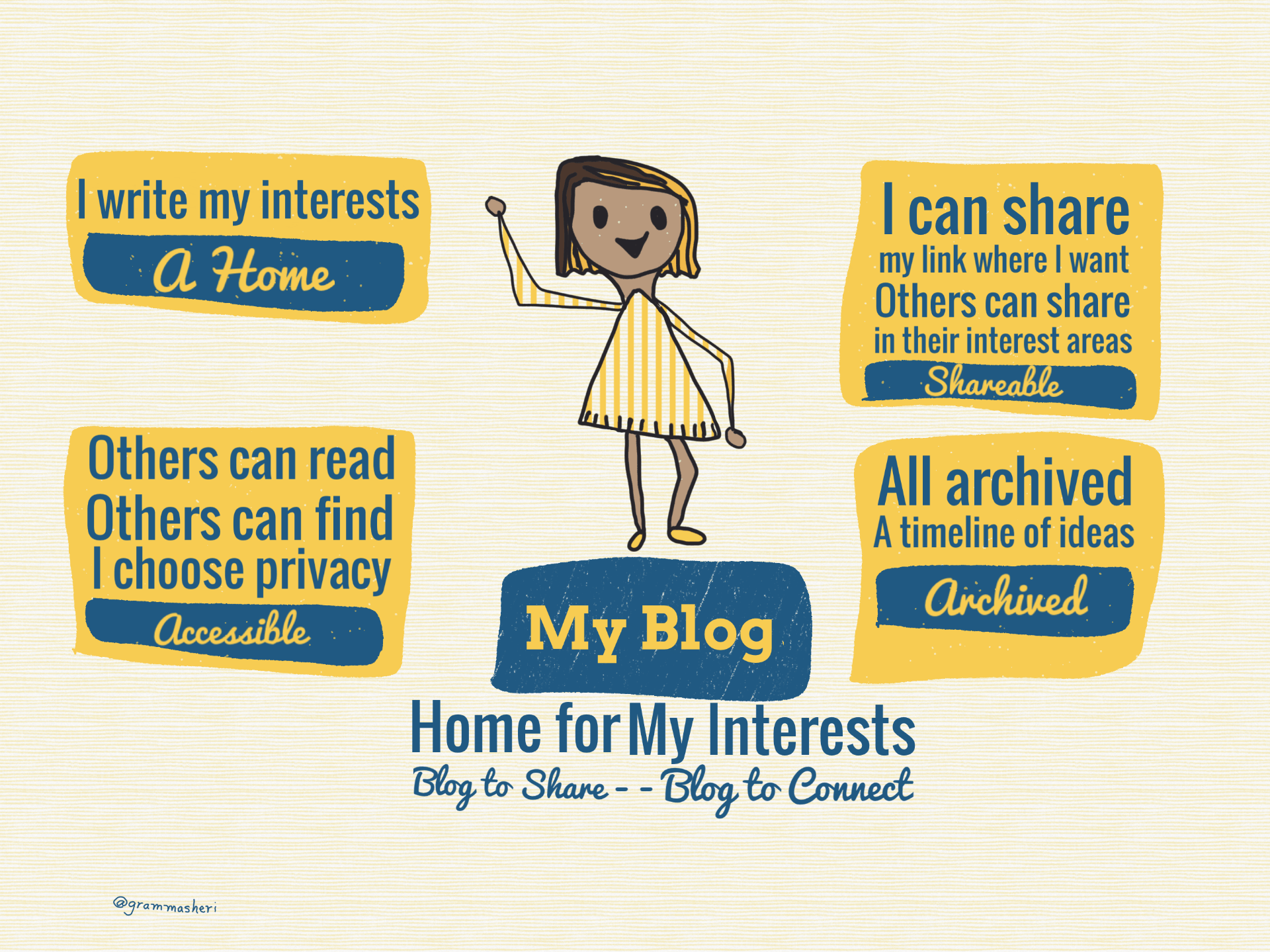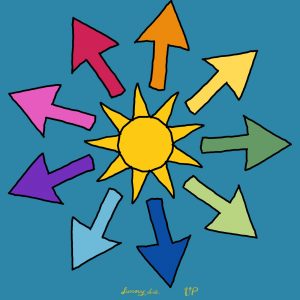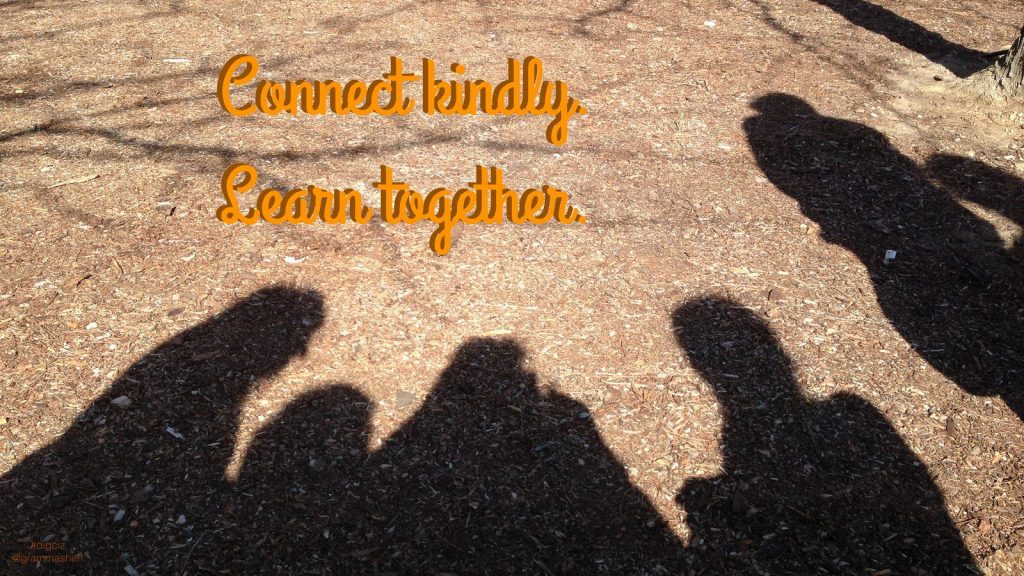Blog to Share and Connect
Yesterday’s post, My Blog: My Home, provided reasons for why it’s great to have a place to write about one’s passions, and to set up a blog that is easily shareable and easy to follow through an RSS or email subscription.
It’s fun to have a place of your own with your ideas and to send people you meet and connect with online or offline to your links. But there’s more: to not just share your information, but also connect with others, try sharing on social media platforms.
Sharing on social media puts your information into the stream of resources. Be sure to use hashtags appropriate to your topic. This will connect you with others interested in your topic and allow you to get into the conversations through the hashtag, thus building a learning network with whom you can share and connect further to extend each other’s knowledge and influence.
Edublogs offers several guides to help you, and will be helpful whether or not your blogging platform is Edublogs:
- Edublogs Guide to Twitter
- Edublogs Guide to Hashtags and Twitter Chats
- Edublogs: Automatically publicize to social media
- 5 Ways Share and Market your Teacher Blog
These info pages will get you started with sharing — marketing — your blog, your passion!
One way to help your ideas is to include images.
Images point to your main ideas and help to hook the idea in the reader’s mind to extend the connection to their own ideas. They add interest and information; they activate memory.
Edublogs offers support for learning about images too:
- Edublogs: Add Images to Posts and Pages
- Edublogs: Featured Images
- Edublogs: All about Images, Copyright, and Creative Commons
- Edublogs: Canva in the Classroom
- Kathleen Morris: A Simple Guide To Free Images, Copyright, And Creative Commons For Students And Teachers
It’s a good idea to use a theme that includes Featured Images — those often are pulled in when links are shared on social media.
Blog to Connect
Your Blog: Your Home
That’s the best reason to blog — your stuff in one place.
But — we are social creatures. We like to engage with others, and that truly is the most important reason to blog— to connect with others.
Write the post, share it out in the places and with hashtags that support your topic. Follow others — their blogs and social media. Share their work. Comment.
Comment on the ideas. Comment on the ideas related to your experiences. Ask questions; dig deeper– see if your own ideas change. Write about other’s ideas on your blog and link to their post — extend the conversation and learn together. Even in disagreement there is common ground, and each experience is valuable. If we share, we learn together.
Where do you comment? In today’s world, the comment you give or receive could be
- on a blog post
- on a blog post responding to your post
- in a tweet
- on other platforms [Instagram, Medium, Hypothes.is, etc.]
Kathleen Morris wrote a wonderful post “Comments For Kids Still Count: Teaching And Promoting Quality Commenting.” She explains how commenting on adult blogs has decreased, but Aaron Davis suggested:
“maybe the comments never left, but rather have become dispersed across various spaces.”
Aaron Davis [What Makes a Comment]
In my experience, comments occur in all those places– and it’s part of connecting with others when that happens, carrying on the conversations to learn more about the topic, to share more information, to give and receive feedback, to provide links to other places of interest, and to just chat.
In those connections, build relationships — keep connecting with the people who respond, and keep initiating responses yourself.
In many of my posts I refer to people in my network, my neighborhoods. I go way back to “First Friends,” the people I first connected with. These are people whom I’ve learned with and stayed connected because we discuss together in blogs, comments, and Twitter those interests about which we are both passionate and also want to extend our learning; we do that together in bits and pieces of conversation and sometimes in collaborations on projects through the internet.
Collaboration?
Example collaborations:
- CLmooc: Connected Learning community
- Vialogues: DigCiz Discussion
- Extend the Conversation
- Constellation Collaboration
- Digital Story Collaboration
- Kids Care
Building a network of valuable connections helps build a better world.
That’s the most important part of blogging: connecting — you never know how one comment and conversation will pull you into a project that will engage you or your students — that will help participants understand a strategy or tool or pedagogy and create a new learning experience for all.
How about it? Ready to Blog, Share, and Connect?




